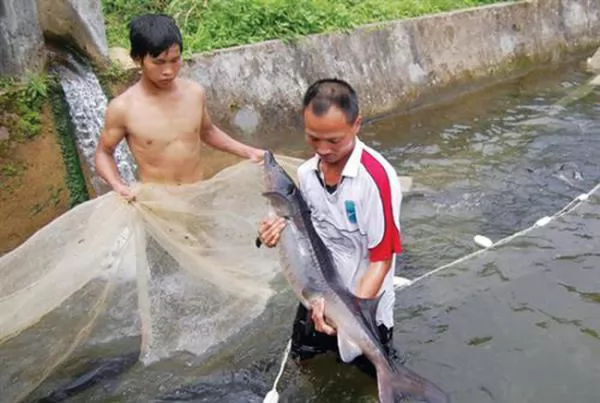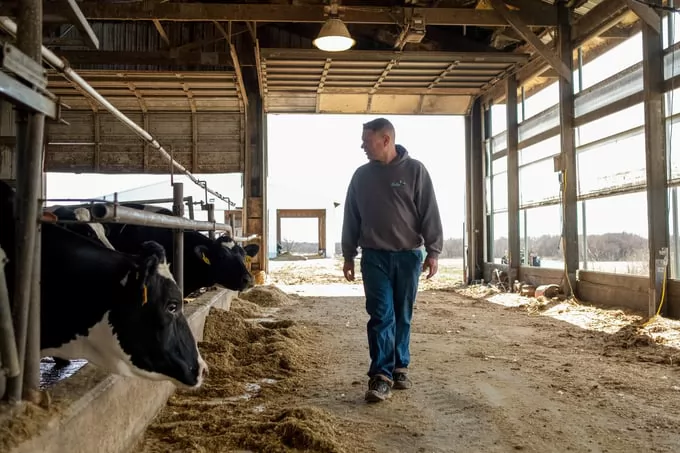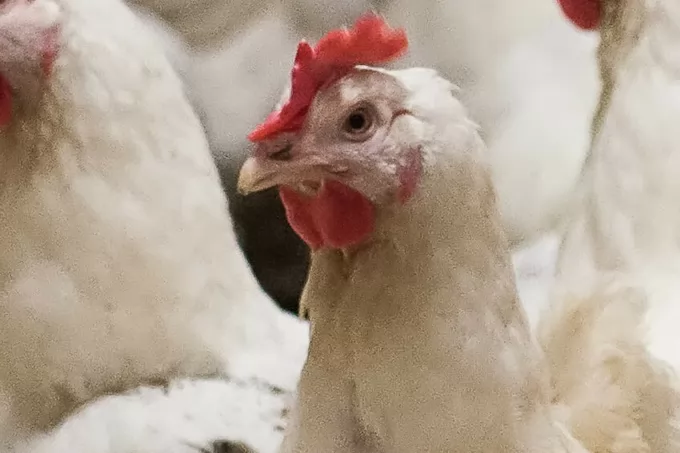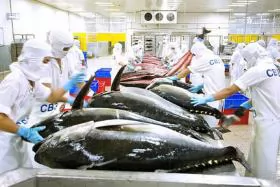Caged-sturgeon breeding brings high incomes to mountainous farmers

Farmers harvest sturgeon. Breeding sturgeon in cages has brought high profits to farmers in Lào Cai Province. — Photo baolaocai.vn
LÀO CAI — Breeding cold-water sturgeon in cages has brought a stable source of income for poor farmers in the northern mountainous province of Lào Cai.
Two rivers of Hồng and Chảy which flow through many districts and nearly 30 hydropower dams are considered favourable conditions for expanding caged fish breeding, especially sturgeon, which helps create a food source for the market and incomes for local farmers.
At present, Lào Cai Province is home to more than 14,000ha of water and hundreds of hectares of paddy fields which were used for breeding Vietnamese fish such as tilapia, carp and catfish.
Notably, the province had more than 50,000cu.m of water breeding cold-water fish like salmon and sturgeon.
The total yield of farmed fish was over 5,000 tonnes per year.
However, fish farming in the province faces several challenges.
Đặng Danh Bộ, an official from the Lào Cai Agriculture Promotion and Service Centre, told Vietnam News Agency that “Most farms are small scale and raise traditional Vietnamese fish with locally-available agricultural by-products.”
“Exploitation of river water sources and reservoirs for fish breeding is not sufficient so the economic value obtained from the practice remains low,” he said.
Caged-fish breeding project
The National Agriculture Promotion Centre had introduced a model of breeding sturgeon in cages in northern mountainous provinces in 2018-2019.
In Lào Cai Province, many ethnic minority farmers have taken part in the production model.
After a year of implementation, the model has proved to be effective in the pursuit of sustainable aquaculture development while bringing about high economic values to the rural districts of Bắc Hà, Mường Khương and Bảo Thắng, which have suitable climate and an abundance of water resources.
Initially, the centre started with four households to carry out the model of breeding sturgeon in cages as a trial in Cốc Ly Hydropower Plant's reservoir in Bắc Hà District.
The total volume of the cages was 400cu.m of water and the breeding lasted for 12 months.
The households were provided with 3,000 fish breeds and 2,700kg of feed.
During the breeding, the fish adapted to the environment and grew quickly.
After a year, the rate of living fish was 70 per cent and reaching an average weight of 1.8kg each.
With a selling price of VNĐ130,000 (US$5.6) per kilo, the total revenue of four households was VNĐ415 million ($17,800), of which profit was nearly 116 million ($4,900).
Breeding traditional Vietnamese fish in cages on a similar scale brought profit of just VNĐ86 million per year.
Obviously, the economic value of the sturgeon farming was 34.8 per cent higher than breeding other fish, Vietnam News Agency reported.
The sturgeons, which were raised in big cages and clean water with safe food, were of better quality.
Cao Văn Quyền, a farmer in Thẩm Phúc Village of Cốc Ly District who took part in the programme, said “We were instructed to raise the fish and to ensure a suitable and clean living environment.”
“So, the fish are healthy. We never used antibiotics,” Quyền said.
Bộ from the province's agriculture promotion centre said the biggest benefit of the model is the ability to maintain a control over the quality of fish breeds and feed, which will greatly help minimise diseases and protect the eco-system.
Cao Văn Lực, a farmer in Cóc Mằn Hamlet, Xuân Quang Commune of Bảo Thắng District, swore by the quality of the fish and the revenues it brought in for the family.
His family earned a profit of VNĐ29 million ($1,300) per year for every 50cu.m.
Following the initial successes, the National Agriculture Promotion Centre and provincial Agriculture Promotion and Service Centre have been organising field trips and training sessions for 30 potential households in the districts of Bảo Yên, Bảo Thắng, Bát Xát, and Mường Khương starting this year.
The centres would help households link with businesses to organise eco-tourism, build the brand of Lào Cai sturgeon this year, complete with a stamp proving the products' origin within the year. — VNS
Maybe you are interested

Bird flu: How US states are testing cattle and humans for the virus
States in the US are playing a key role in the nation's response to a growing outbreak of bird flu among dairy cattle that has also infected humans.

The United Kingdom joins CPTPP: Fisheries have many great advantages
Vietnam has reached an agreement in which the United Kingdom will open more market access for Vietnam in addition to existing bilateral Free Trade Agreements (FTAs).

Laying Hen Welfare Forum launches white bird feedback survey
The UK's Laying Hen Welfare Forum has launched a survey to establish the sector's experiences in rearing and managing white bird commercial layers.





